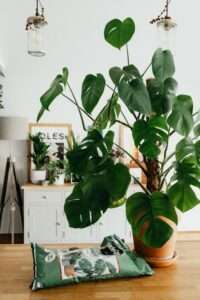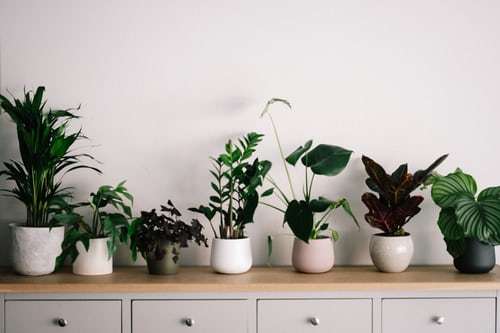 All houseplants need water, to varying degrees of course. No matter what you grow indoors, we’ve got the ins and outs of watering houseplants for the best results.
All houseplants need water, to varying degrees of course. No matter what you grow indoors, we’ve got the ins and outs of watering houseplants for the best results.
When to water: There are exceptions to every rule, but for the most part houseplants should be watered when the top inch or so of potting mix feels dry to the touch.
As you get to know your houseplants, you’ll eventually know when they need water by the weight of the pot. If it “feels light,” chances are it’s time to water.
Plants may need less water in winter, when they’re less actively growing. As light levels and warmth increases in spring, watch for signs of new growth. As the plant draws more water from its soil mix to fuel growth, you may find the soil dries quicker and more frequent watering is needed.
Small pots dry out quicker than large pots, so keep a close eye on these.
How to water: With most plants, you can simply pour the water directly into the potting mix until it begins to run out through the pot’s drainage holes. Let the pot drain for a while and then place it back where it belongs. If you use a saucer, or the pot has a connected saucer, check to see if there’s water in it after about a half hour. If there is, dump that water out.
Some houseplants do not like water collecting in their crowns—where their stems or leaves meet the soil. These include African violets, cape primroses and certain begonias. Water these houseplants from below; sit their pot in a container of water so that the potting mix draws water up from the pot’s drainage holes (or through the sides of the pot if it is unglazed terra-cotta). When the soil surface looks damp, remove the pot from the water and let it drain.
Plants that are watered from below should occasionally be carefully watered from above to flush salts out of the potting mix.
If you’ve neglected to water your plant for so long that the soil has dried and pulled away from the sides of the pot, sink the pot in a bucket of water until the potting mix loosens and expands again (provided that the plant is still alive).
Water preparation: Use room-temperature water to avoid shocking the plant.
There is no need to let water sit overnight before using it on plants. This has been recommended as a way to let chlorine evaporate, but there generally isn’t enough chlorine in tap water to harm most plants.
If you have soft water, you can use it to water your houseplants, but be sure to flush the salts that can accumulate in the potting mix once a month or so. Simply pour water into the pot until it runs out the bottom; wait for it to drain completely and then repeat the process.
Recommended reading:
Take some of the guesswork out of caring for houseplants by choosing durable types and following an expert’s advice. You can find foolproof plant recommendations and smart care tips in Tovah Martin’s The Indestructible Houseplant.
Even accomplished outdoor gardeners can stumble trying to make plants thrive inside. How Not to Kill Your Houseplant by Veronica Peerless is a cute and informative guide to success with indoor plants.
The New Plant Parent by Darryl Cheng is perfect for growers who like to understand the “why” behind advice. An engineer and analyst by trade, Cheng shows readers how to observe their spaces and their plants and base their decisions on plant purchases and care routines off of those observations.
MEGHAN SHINN www.hortmag.com

